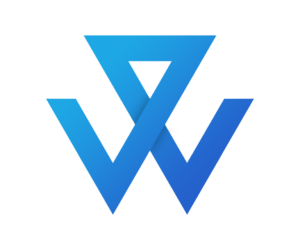Ever wonder how self-driving cars know where pedestrians are or how medical systems find tumors in scans? The key is high-quality data prepared through AI image annotation. Annotation is the essential first step that teaches AI models to interpret and understand the visual world, similar to how labelling a diagram can help students understand complex subjects.
AI image annotation labels or tags images to build strategic datasets for machine learning models. This is the information that AI systems require to identify patterns, classify objects, and make calculated decisions. Without this, even highly advanced algorithms would struggle to perform basic visual recognition tasks. But annotation is more than just an operational detail: it’s a critical path to success in AI projects. Poor annotation leads to poor model performance. In fact, a study by Cognilytica found that about 80% of AI development time is spent on data preparation, including annotation.
In this guide, we will cover everything you need to know about ai image annotation and explain why many businesses are turning to image annotation outsourcing as a scalable, efficient solution. We will also show you how Wing Assistant can provide trained remote teams to support your annotation needs and help you scale without compromising quality.
What is AI Image Annotation?
AI image annotation is the process of adding metadata, including labels, tags, and markers, to an image. These labels tell AI systems what’s in the image and where it is, enabling machines to “see” and “understand” visual data similar to the way humans do.
Here’s how it works:
- Humans carefully label objects, regions, or features in images.
- Researchers use these annotated datasets to train machine learning models, especially in supervised learning scenarios.
- The better the quality of the annotation, the more accurately the model can learn to recognize and predict outcomes from new, unlabeled images.
Imagine teaching a child to identify animals. You show pictures and explain, “This is a cat,” “This is a dog.” Over time, the child learns to distinguish between them. AI learns in a similar way but relies entirely on the precision and comprehensiveness of the labeled data it’s fed.
Annotation creates the “labeled datasets” that serve as ground truth for supervised learning. These datasets are indispensable for a wide range of applications, from detecting cancer in radiology scans to identifying obstacles on the road for autonomous vehicles.
Without properly annotated datasets, even the most sophisticated AI algorithms can’t interpret visual information effectively. In short, annotation bridges the gap between raw data and actionable AI models.
Common Types of AI Image Annotation
There’s no one-size-fits-all approach to AI image annotation. Different use cases demand different annotation techniques based on the level of detail and type of data required. Let’s break down the major types and their specific applications:

Bounding Boxes
One of the most common ways to label images is by using bounding boxes. Annotators draw a rectangle around something important in a picture, like a car on the road or a product on a store shelf. Bounding boxes are simple and effective.
They give AI models just enough information to recognize and locate objects quickly, which makes them a popular choice for a lot of real-world tasks. However, bounding boxes have their limits. They work best when objects are easy to separate and have regular shapes. When objects overlap or have unusual outlines, other, more detailed annotation methods are usually needed to get the job done right.
Semantic Segmentation
Semantic segmentation takes things a step further by labeling every single pixel in an image based on what it belongs to. Instead of just outlining an object, it creates a detailed map that shows exactly where the object begins and ends. This level of precision helps AI models not only find objects but also understand their exact shape and boundaries.
You will often find semantic segmentation used in fields where accuracy really matters, like medical imaging. For example, it can help identify the precise edges of tumors in a scan. The downside is that this method is time-consuming and demands a high level of skill. Annotators need to be careful and consistent to get the detail that good results depend on.
Polygon Annotation
When objects have complex or irregular shapes, polygon annotation is often the best choice. Instead of drawing a simple box, annotators carefully trace the outline of an object by placing points along its edges. This method gives a much more accurate and flexible shape compared to bounding boxes.
Polygon annotation is especially important in industries like agriculture, where it can be used to map the exact shape of crop fields, or in geospatial work, where precision is needed to identify buildings from satellite images. The downside is that it takes more time and a skilled hand to get it right. Creating these detailed outlines demands patience and experience to ensure the accuracy that good AI models rely on.
Keypoint Annotation
Keypoint annotation is all about marking specific points on an object, like the corners of a mouth or the joints in a person’s body. These points help capture the shape and structure of whatever is being labeled.
This type of annotation is a must for tasks like facial recognition or human pose estimation, where understanding fine details really matters. By mapping out these keypoints, AI models get a clearer picture of how objects are structured and how they move. This opens the door to more advanced applications, such as detecting emotions from facial expressions or recognizing gestures in real time.
Image Classification
Lastly, image classification provides labels for entire images rather than specific objects within them. This method is efficient when the presence or absence of a category is sufficient without needing localization. It’s commonly used in scenarios like categorizing images into “cat” or “dog,” or labeling medical images as “benign” or “malignant.”
Choosing the right type of annotation is not merely a technical decision but a strategic one that can significantly influence the effectiveness and efficiency of AI model development.
AI Image Annotation: Use Cases Across Industries
The applications of AI image annotation are vast and growing rapidly across industries.
Autonomous Vehicles
Self-driving cars rely heavily on computer vision to navigate roads safely. Annotating millions of images with bounding boxes for cars, pedestrians, cyclists, and traffic signs helps these systems learn to recognize and react to real-world conditions. Intel CEO Brian Krzanich estimates that a typical autonomous vehicle can generate up to 4,000 GB of data per day, and much of this data needs annotation to be useful.
Annotation types used: Bounding boxes, semantic segmentation.
Medical Imaging
Medical imaging applications, such as MRI and CT scans, require highly detailed and accurate annotations. Semantic segmentation helps models identify and delineate tumors, organs, and abnormalities, assisting doctors in diagnosis and treatment planning.
Annotation types used: Semantic segmentation, polygon annotation.
Retail & E-commerce
E-commerce platforms enhance product discovery by using AI trained on annotated images. Annotating product photos helps improve search algorithms, recommendation engines, and inventory management.
Annotation types used: Image classification, bounding boxes.
Agriculture
In precision agriculture, annotated satellite and drone images help monitor crop health, predict yields, and detect pest infestations.
Annotation types used: Polygon annotation, semantic segmentation.
Security & Surveillance
Security systems rely on annotated datasets to recognize faces, detect intrusions, and monitor activities in real time.
Annotation types used: Keypoint annotation, bounding boxes.
From healthcare to agriculture, AI image annotation acts as the bridge between raw image data and actionable AI models.
Challenges in Manual Annotation
Despite its critical importance, manual annotation isn’t without its challenges.
Time-Consuming & Labor-Intensive
- Annotation takes time. Every image has to be reviewed carefully and labeled with precision. For tasks like semantic segmentation, where every pixel needs attention, the work can multiply quickly. This not only drags out project timelines but also puts a strain on teams and can lead to burnout.
High Cost If Done In-House
- Running an in-house annotation team gets expensive fast. Besides salaries, companies have to budget for training, software, and the infrastructure to manage large datasets. For startups and research teams, these costs can become hard to manage.
Consistency and Accuracy Issues
- Keeping annotations consistent is difficult. Different people might interpret guidelines in different ways, and even the same annotator can be inconsistent over time. Without strong quality control, small errors add up and can hurt model performance.
Data Security Concerns
- Many annotation projects involve sensitive data like personal photos or confidential product designs. Mishandling this data can lead to serious consequences. Companies need to follow regulations like GDPR and HIPAA and invest in secure handling practices, which adds another layer of responsibility.
AI Image Annotation Tools
Selecting the right tools is crucial for scaling AI image annotation effectively. Platforms today offer a lot of powerful features, but keep in mind that technology alone is not enough. The real success of any annotation project still depends heavily on skilled human annotators. While good tools can speed up the work and improve consistency, it is human judgment that makes sure complex cases are handled properly and edge cases are labeled correctly.
With that in mind, let’s look at some of the top annotation platforms available:
Labelbox
Labelbox is popular for its user-friendly interface and ability to scale with growing projects. It offers flexible workflows and integrates easily with machine learning pipelines. Whether you need simple bounding boxes or detailed semantic segmentation, Labelbox handles a wide range of annotation types, which makes it a solid choice across different industries.
CVAT (Computer Vision Annotation Tool)
CVAT is an open-source tool built by Intel. It is a great option for teams that need a lot of control and customization. However, it comes with a steeper learning curve, which means it is better suited for technical teams with experience handling more advanced tools.
V7
V7 is built for enterprise-level projects and offers strong collaboration features along with AI-assisted labeling. It supports different data types, including video and 3D point clouds, and is especially good at managing large, complex datasets quickly and efficiently.
SuperAnnotate
SuperAnnotate focuses on making annotation faster without losing quality. It stands out for its built-in quality assurance features and workforce management tools. Its AI-powered pre-annotation tools help speed up the labeling process, which can be a big advantage for teams working on large volumes of data.
Scale AI
Scale AI offers a combination of managed services and a powerful platform for in-house teams. It is known for delivering high-quality data, especially in fields like autonomous vehicles and e-commerce, where precision is critical. Scale AI’s reliability has made it a go-to partner for projects where accuracy cannot be compromised.
Roboflow Annotate
Roboflow Annotate is a favorite among startups and small teams. It is easy to use, affordable, and perfect for teams getting started with computer vision projects. It provides simple tools for uploading, labeling, and exporting datasets, helping teams build and manage their first machine learning models without a lot of overhead.
Why Outsourcing Image Annotation Makes Sense
Given the complexities, many organizations opt for image annotation outsourcing.
- Cost-Effectiveness: Outsourcing allows businesses to save significantly on operational costs compared to building an in-house team.
- Access to Trained Remote Teams: Professional outsourcing providers offer access to experienced annotators who understand best practices, reducing onboarding times.
- Scalability During AI Model Development: Outsourced teams can scale up or down quickly based on the needs of your project—a flexibility that’s often not possible with in-house teams.
- Faster Turnaround Times: Dedicated teams focusing solely on annotation can significantly speed up the project timeline. Ultimately, outsourcing data preparation to an administrative assistant can substantially cut development times, boosting operational efficiency.
How Wing Assistant Can Help
Building a high-quality, scalable annotation team requires more than just tools. That is where Wing Assistant comes in.
Wing Assistant offers image annotation services through dedicated, full-time remote assistants. Every assistant is:
- Pre-vetted and highly skilled: Ready to execute a variety of annotation tasks, including bounding boxes, semantic segmentation, polygon annotation, and keypoint detection.
- Affordable: Providing a cost-effective alternative to building and maintaining an in-house team, while allowing flexibility to scale up or down depending on project demands.
- Committed to confidentiality and quality: Working under strict data security protocols and maintaining consistent, high-quality output across projects.
In addition to core image annotation work, Wing assistants can also support your operations with comprehensive data labeling for machine learning workflows, quality assurance (QA) checks to ensure data integrity, and project management support to streamline and organize annotation initiatives
This holistic approach means businesses can not only scale their annotation projects efficiently but also integrate related tasks seamlessly. Companies working with Wing Assistant can focus more on model development and deployment, confident that a professional, reliable team is handling their annotation needs.
For AI teams that are looking to streamline their workflows without the operational burden of recruitment, training, and management, Wing Assistant delivers a practical, effective solution that keeps quality and security at the forefront.
Building Stronger AI with AI Image Annotation
AI image annotation is the foundation that enables computer vision and AI applications to be possible. Without accurate and consistent annotated data, even the most advanced models struggle to perform the way we need them to in the real world.
But here’s the thing: creating large, high-quality datasets takes serious time and resources. It’s expensive. It’s slow. And if your team is stuck labeling data, they’re not building better models. That’s why so many businesses turn to image annotation outsourcing: it’s faster, it costs less, and it keeps your projects moving forward.
If you’re looking for a way to scale your annotation efforts without compromising quality or security, Wing Assistant can help. Our dedicated remote teams are trained to deliver high-quality annotations, providing you with the flexibility and support you need to propel your AI projects forward.
Ready to optimize your annotation workflow and scale faster? Explore Wing’s services or schedule a free consultation today.
Kandice is a content writer & strategist with over 5 years of experience in digital marketing. She specializes in SEO-optimized content for the SaaS and tech industry. She’s a digital nomad, currently based in Mexico, and is passionate about helping other business owners and freelancers increase their productivity when working remotely. When she’s not behind her computer you’ll find her at the beach snorkeling, playing volleyball, doing yoga, or cooking up a delicious vegan meal.






